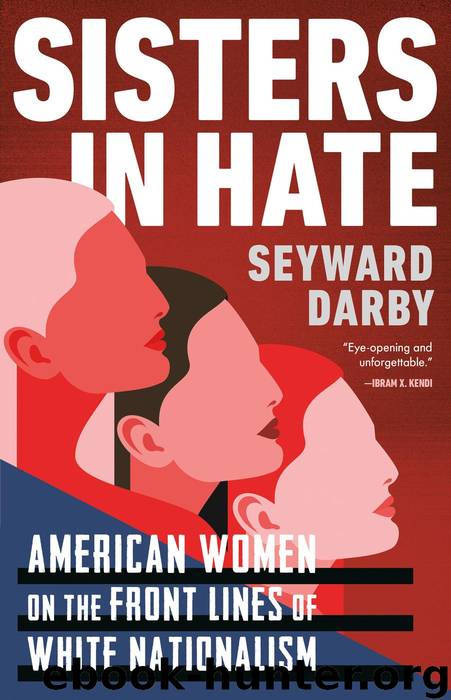Sisters in Hate by Seyward Darby

Author:Seyward Darby
Language: eng
Format: epub
Publisher: Little, Brown and Company
Published: 2020-07-20T16:00:00+00:00
AS A HASHTAG, tradlife dates back to at least 2015. It anchors an archive of images, videos, and other online content produced mostly by women who call themselves tradwives. As a culture, tradlife is a mode of existing both online and off. To be trad is to seek a wholesale return to the social norms and gender roles of the past, when life for women was supposedly better, safer, and stronger.
What qualifies as traditional isn’t precise—the only requirement is that it derive from a mythical, unspoiled version of history and celebrate clearly defined masculine and feminine archetypes. For some acolytes, that means life in suburbia, reclaiming “Stepford wife” as a badge of honor. For others, it’s life on the frontier, à la Little House on the Prairie. Some people reach as far back in time as pre-Christian societies in northern Europe. Tradlife can be about getting back to nature, living in a house with a white picket fence, or some combination of both. The appeal is intentionally broad, attracting women like Lacey Lauren Clark (a.k.a. Lacey Lynn), a homemaker and vlogger who idolizes June Cleaver, and Sarah Dye (a.k.a. Volkmom), who lives on an organic farm in Indiana and posts YouTube videos about the medicinal uses of herbs.4
Tradlife champions the family unit, common sense, and self-reliance. Home is a woman’s domain, and she manages it with the same eye toward efficiency and success that her husband applies to his career. Tradwives share tips for setting weekly chore schedules, baking the perfect pie, and saving money. The creator of the tradlife Facebook page “The Truly Vintage Housewife” once told followers, “Less waste means more money in your pocket, and more money in your pocket means more security. In today’s world we are pushed to buy, buy, buy and never ask why, why, why.”5 Tradwives applaud one another’s daily achievements and pleasures, constantly reinforcing a shared sense of purpose and belonging.
Tradlife is also an aesthetic ideal, ready-made for social media. Memes abound, repurposing midcentury illustrations of smiling wives handling household appliances and photographs of blond women in fields of flowers, wheat, or grass. “Maybe you’re a sandwich away from happiness,” reads one meme featuring an image of a handsome man hugging a woman who bears a striking resemblance to Grace Kelly. (The implication: Keep your man fed and you’ll be better off for it.) Many tradwives curate their outfits—pearls and full skirts for some, bonnets and aprons for others—or stage vignettes of happy homelife, all to share with online followers. On Instagram, Facebook, and Pinterest, they show off baby clothes, watercolor paintings, and floral arrangements created by hand. Lacey Clark once posted an image of herself standing behind jam jars arrayed on a countertop. “Am I prouder of my canning or birthing two babies?” she asked. “The babies, but it’s close.”6
Like many digital influencers, tradwives present themselves as both aspirational and relatable. The message is simple enough: You know you want to be like us, and you can if you try. Unlike
Download
This site does not store any files on its server. We only index and link to content provided by other sites. Please contact the content providers to delete copyright contents if any and email us, we'll remove relevant links or contents immediately.
| Anarchism | Communism & Socialism |
| Conservatism & Liberalism | Democracy |
| Fascism | Libertarianism |
| Nationalism | Radicalism |
| Utopian |
The Secret History by Donna Tartt(16623)
The Social Justice Warrior Handbook by Lisa De Pasquale(11489)
Thirteen Reasons Why by Jay Asher(7788)
This Is How You Lose Her by Junot Diaz(5772)
Weapons of Math Destruction by Cathy O'Neil(5037)
Zero to One by Peter Thiel(4824)
The Myth of the Strong Leader by Archie Brown(4789)
Promise Me, Dad by Joe Biden(4447)
Beartown by Fredrik Backman(4418)
Stone's Rules by Roger Stone(4415)
How Democracies Die by Steven Levitsky & Daniel Ziblatt(4399)
The Fire Next Time by James Baldwin(4343)
100 Deadly Skills by Clint Emerson(4078)
A Higher Loyalty: Truth, Lies, and Leadership by James Comey(4033)
Rise and Kill First by Ronen Bergman(4012)
The David Icke Guide to the Global Conspiracy (and how to end it) by David Icke(3882)
The Farm by Tom Rob Smith(3872)
Secrecy World by Jake Bernstein(3782)
The Doomsday Machine by Daniel Ellsberg(3731)
